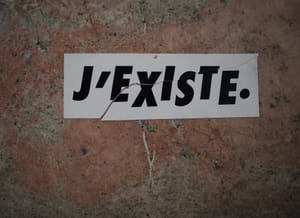Perhaps we are given our size in comparison to the world for good reason. No human is meant to take on the whole Earth. We came up in community, and as such in such a world, awareness of all its parts and the aspirations to heal it, though noble of pursuit, is fruitless if you cannot even tend your own garden. Even those great and grand mother trees which share their nutrients in their mycorrhizal networks may only reach so far. Should it neglect its smaller surroundings so it might reach the other side of the world? Noble, but untrue to itself and its abilities. Instead, it nurtures and heals all what it can. Just so, heroes of myth do not save the world, the world saves the hero from himself.
To strive for healing of the whole Earth without tending to our own garden is not only overwhelming, it is misaligned with the nature of our form, our fate, and even our mythology. There is a sacred fit between scale and soul, duty and domain. Our size is not a limitation, but an orientation; not an error, but a sacred boundary. It is so perfect indeed that it garners the wonder of a universe which knew us, and knew well that to see and feel too much would unmake us. And so we are gifted these smaller plots—patches of people, places, hearts, and moments to tend with care, urgency, and intimacy—to know both struggle and peace in a single lifetime.
The heroic archetype does not contain trials so the hero might fix the world, but so the world can shape the hero. To humble him, strip him, rebuild him—not into a savior, but into something real and true. The epic tale is too an inward spiral where the climax is not victory over an external evil, but the discovery of true virtue and the will to enact it wholly. In reframing the hero archetype as such reframes the lessons we learn about morality and teaches care through scope, power through presence, and legacy through rootedness.
This eb and flow of the hero and society reveals the necessity of struggle. Without this societal struggle, such heroes, still born unto the world, rot. Some societies have chosen this particular turmoil to contend with, be it conquest, war, or competition, but it nonetheless is one which provides the means to suffer rightly—it is the crucible of heroism. The hero does not rise once to save the world, but returns again and again, each time reconstituted by the society that provides the very tension through which their myth is forged. The society and the hero are thus in symbiosis—the hero a paragon in the making, individually expressing the highest virtues attainable, the society forming the tensions and struggles against which the virtues and heroes find definition. A civilization that does not produce hardship, does not produce real stakes, real moral burdens and real tests of will, ultimately starves its potential heroes. They rot on the vine—no dragon, no abyss, no fire to walk through, no virtues to realize.
This calls to mind a famous Nietzschean idea:
One must still have chaos in oneself to be able to give birth to a dancing star.
But we turn it on its head in this perspective; the chaos is not merely internal, it is social. It is embedded in the design of the world. Societies must offer challenge. Must, in a sense, choose their struggle, else their heroes never have something to shape themselves against. Conquest, war, the hunt, intellectual rivalry, artistic transcendence, even spiritual or ascetic rigor—each is a form of ritualized struggle. And each gives rise to a different kind of mythic figure.
This is what distinguishes a great society: neither peace nor progress nor even prosperity, but whether it produces heroes. And whether it has the wisdom to do so without self-destruction. A society too comfortable breeds no legends, and one too volatile devours its children before their becoming.
We realize then that the proper role of a society is to suffer rightly, and in doing so, allow its individuals to transmute suffering into meaning. In this schema, the hero is not a savior from suffering, but vessel through which suffering is made beautiful. Their gift is not deliverance; it is demonstration. They show you what it looks like to meet hardship with honor.
And that takes us back to the tree. It does not seek to cure the forest of disease. It does not stretch its roots across continents. But it does reach into the rotting and weave something good from it. It contends not with the world, but with the soil it has been given. Its grandeur is not diminished by its scope, it is revealed by its fidelity.





Comments